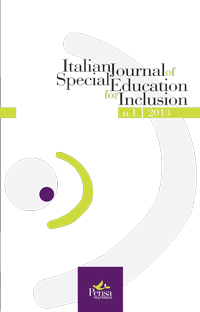Different mirrors Sibship, disability and life phases
Abstract
Although siblings perceive the differences between themselves and the disabled brother/sister - through observation, everyday interaction and direct comparison – without any gradual and specific guidance, they have great difficulty in understanding the actual situation and in finding answers for the various questions concerning their disabled brother/sister that may spring to theirminds. As a result, without appropriate and careful explanations from adults, siblings risk building a distorted and even dysfunctional image of their brother/sister’s disability, particularly in early childhood but also – albeit to varying degrees – in adolescence and adulthood.
Based on these initial assumptions, 2009 witnessed the start of the research project “Essere fratelli. Vivere la disabilità” (“Being siblings. Living with disability”), the aim of which was to investigate
– from an educational and pedagogical perspective – sibling relationships and disability. How to support and provide guidance for the life plan of brothers and sisters of the disabled?
Which actions and educational interventions would help to guarantee this? Starting from (and through) the initial question of “how to communicate the diagnosis to siblings of disabled people”, the research highlighted some interesting educational dimensions that led us to refine our thoughts, in terms of the importance of supporting the siblings of the disabled person as well as the parents. The following considerations focus on the main conceptual issues linked to the communication of the diagnosis, sibling relationships, relationships with parents in the different life cycle phases: childhood, adolescence, adulthood.
##submission.downloads##
Pubblicato
2014-10-28
Fascicolo
Sezione
III. ESITI DI RICERCA (a. ricerca qualitativa e quantitativa; b. Strumenti e metodologie)


